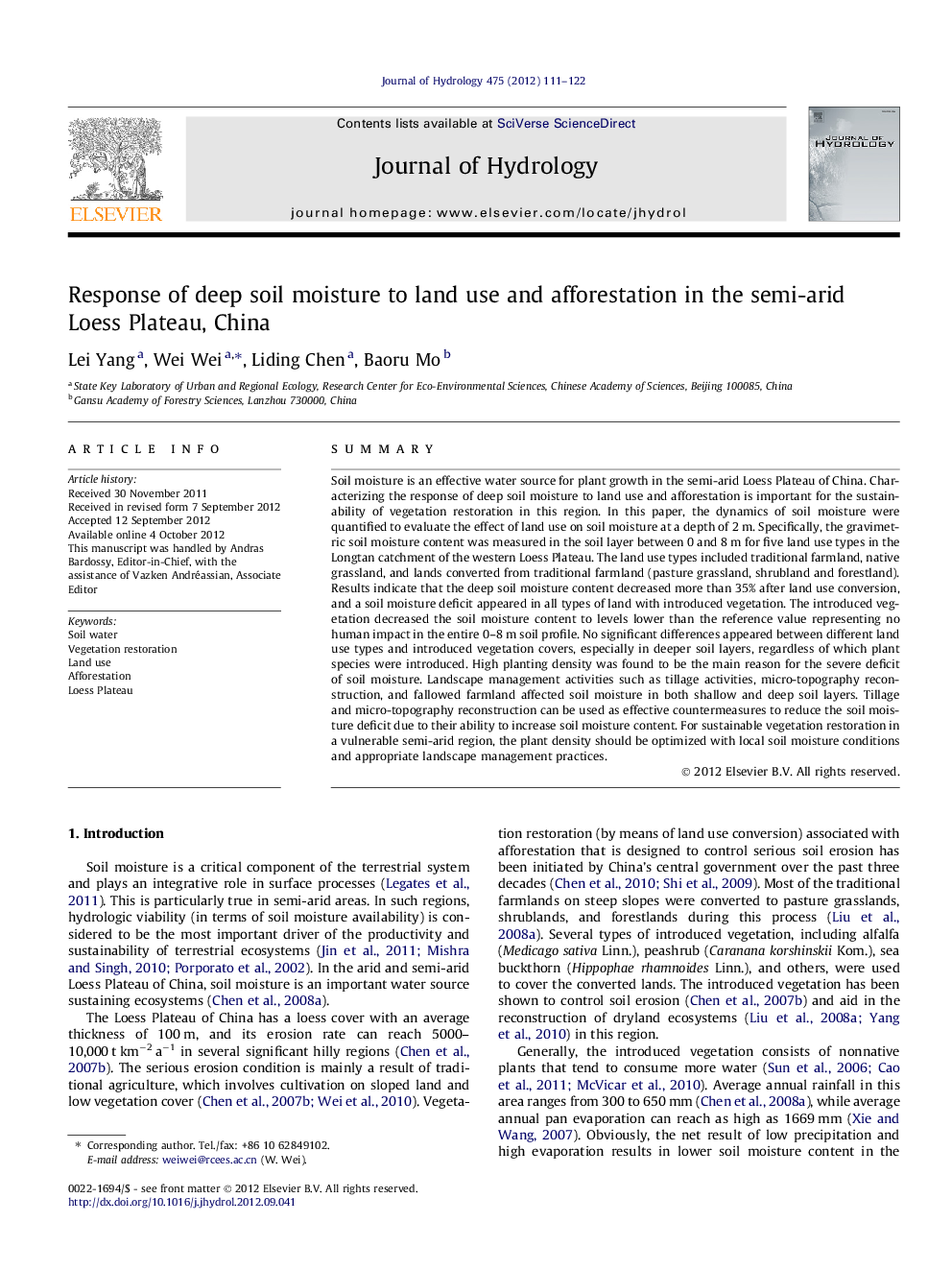| کد مقاله | کد نشریه | سال انتشار | مقاله انگلیسی | نسخه تمام متن |
|---|---|---|---|---|
| 4576649 | 1629973 | 2012 | 12 صفحه PDF | دانلود رایگان |

SummarySoil moisture is an effective water source for plant growth in the semi-arid Loess Plateau of China. Characterizing the response of deep soil moisture to land use and afforestation is important for the sustainability of vegetation restoration in this region. In this paper, the dynamics of soil moisture were quantified to evaluate the effect of land use on soil moisture at a depth of 2 m. Specifically, the gravimetric soil moisture content was measured in the soil layer between 0 and 8 m for five land use types in the Longtan catchment of the western Loess Plateau. The land use types included traditional farmland, native grassland, and lands converted from traditional farmland (pasture grassland, shrubland and forestland). Results indicate that the deep soil moisture content decreased more than 35% after land use conversion, and a soil moisture deficit appeared in all types of land with introduced vegetation. The introduced vegetation decreased the soil moisture content to levels lower than the reference value representing no human impact in the entire 0–8 m soil profile. No significant differences appeared between different land use types and introduced vegetation covers, especially in deeper soil layers, regardless of which plant species were introduced. High planting density was found to be the main reason for the severe deficit of soil moisture. Landscape management activities such as tillage activities, micro-topography reconstruction, and fallowed farmland affected soil moisture in both shallow and deep soil layers. Tillage and micro-topography reconstruction can be used as effective countermeasures to reduce the soil moisture deficit due to their ability to increase soil moisture content. For sustainable vegetation restoration in a vulnerable semi-arid region, the plant density should be optimized with local soil moisture conditions and appropriate landscape management practices.
► Deep soil moisture decreased more than 35% after vegetation restoration.
► Different introduced vegetations may produce similar soil moisture pattern.
► High planting density is the key factor in soil moisture deficit.
► Landscape management can increase deep soil moisture effectively.
► Scientific management should be considered for sustainable vegetation restoration.
Journal: Journal of Hydrology - Volume 475, 19 December 2012, Pages 111–122